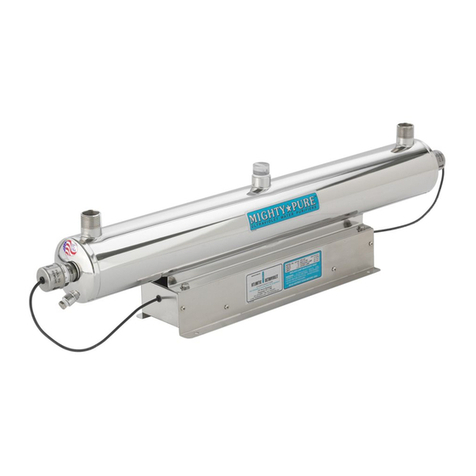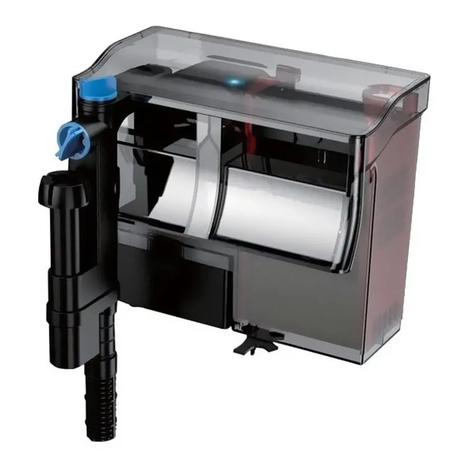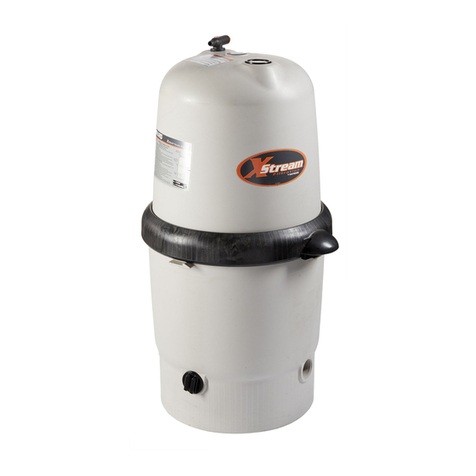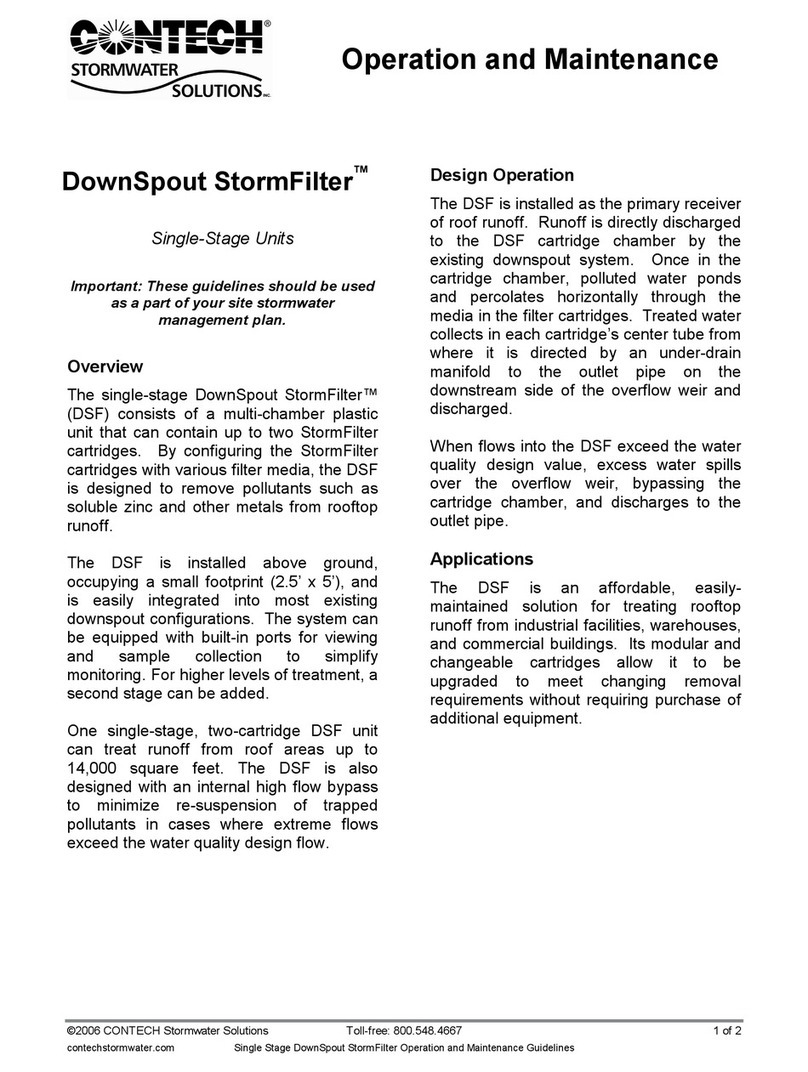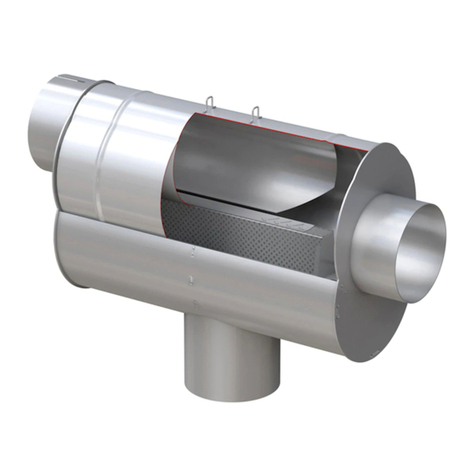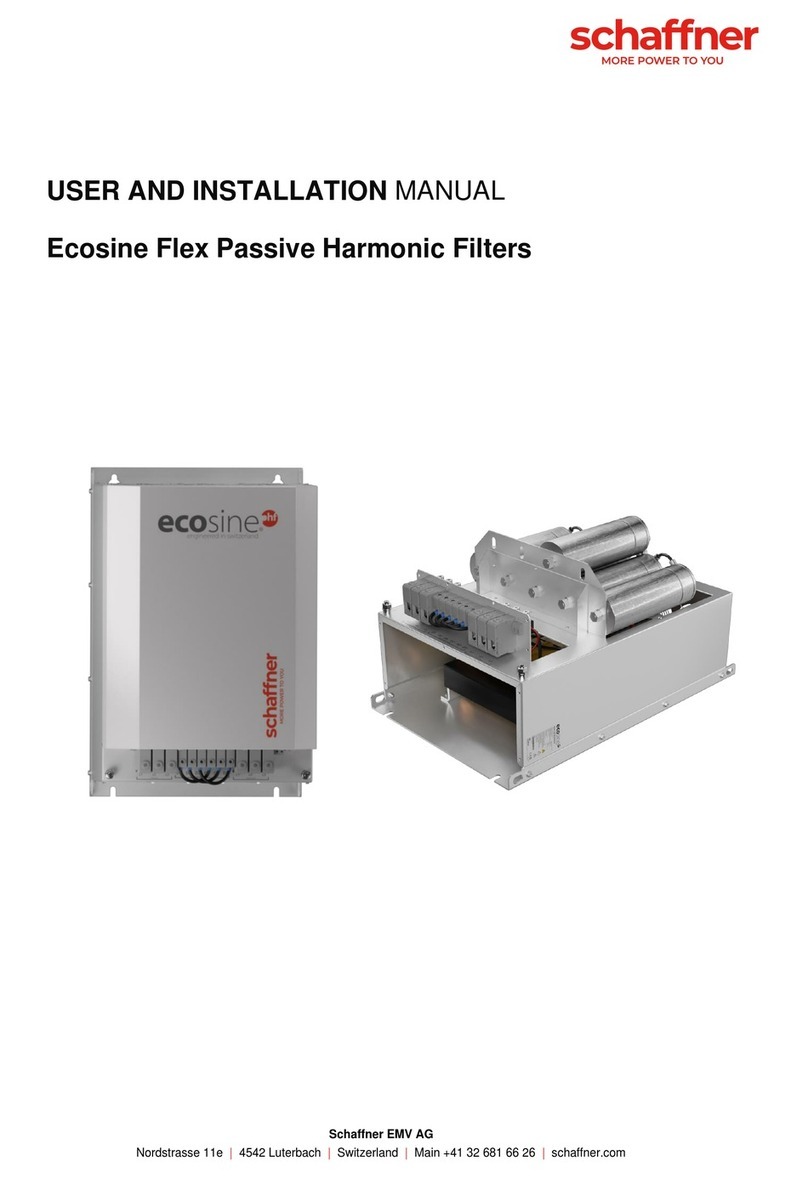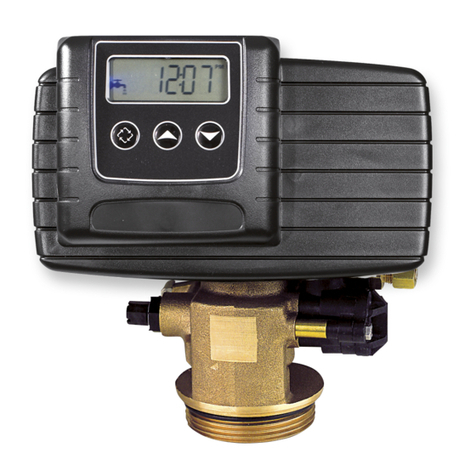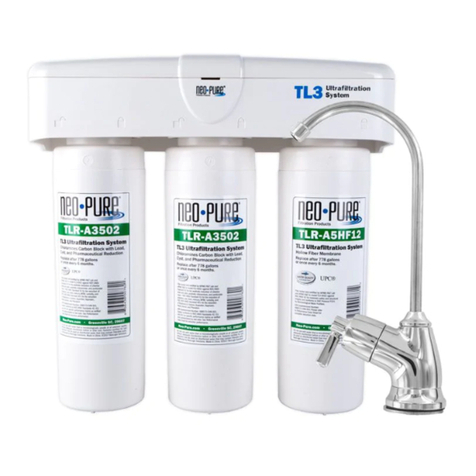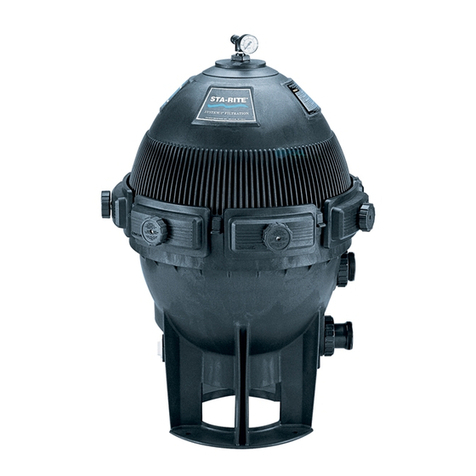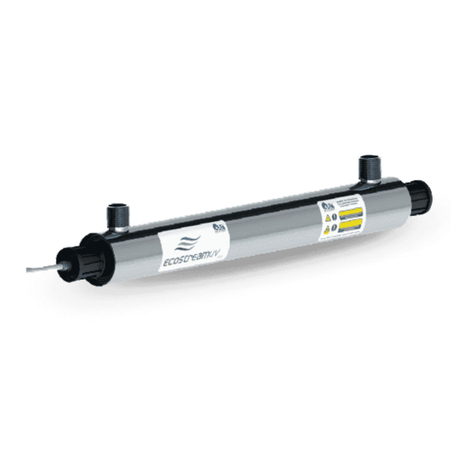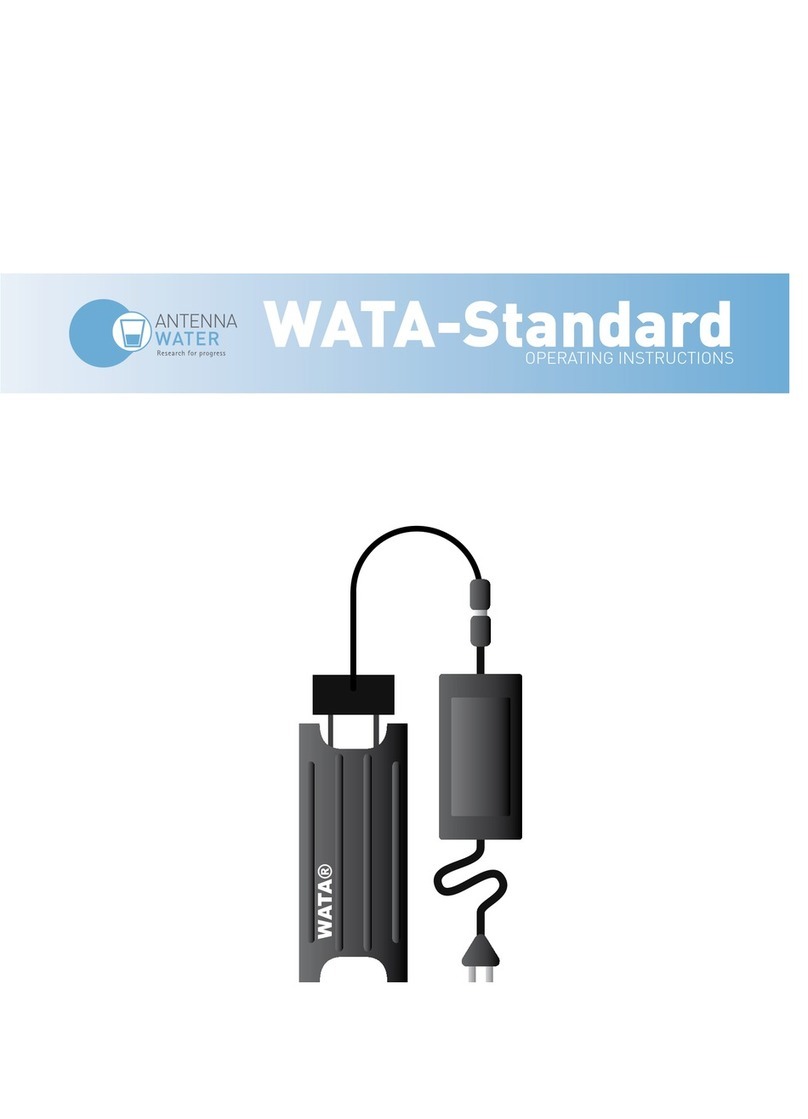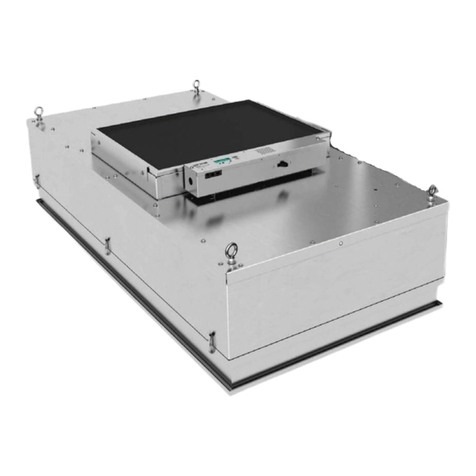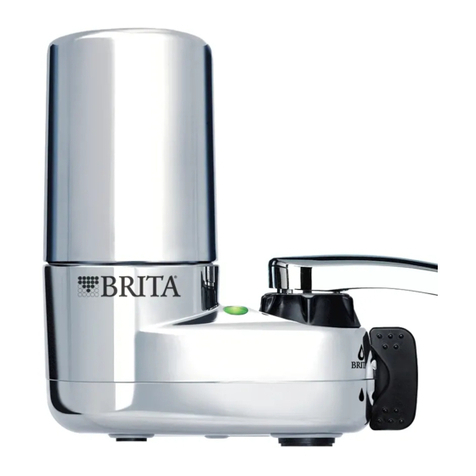
PRODUCT APPLICATION
Ultraviolet disinfection provides a simple, inexpensive way of destroying bacteria, mold, virus,
algae and fungi without the use of heat or chemicals. Each EcoStream system is designed to
achieve a specific energy dose to properly destroy microorganisms.
The dosage which applies to ultraviolet disinfection is proportional to energy, time, and area.
The total UV energy is attributed to the amount of energy emitted from all sides of a UV lamp
and is expressed in micro watts. The exposure is expressed in seconds and represents the total
time it takes for the water to flow through the UV chamber. The final factor in determining the
dosage relates to the total area and is expressed in centimeter squared. To summarize, the
total dosage is expressed in µW-sec/cm2or micro watt second per centimeter squared.
UV Disinfection is affected by many factors and the following should be looked at prior to the
installation of the UV system:
1. UV Transmission (transmittance) deals with the effectiveness in which the 254 nanometer
wavelength of ultraviolet light is transmitted through the water. The higher the
transparency of the water, the more effective the UV system becomes. This optical clarity is
evaluated by performing a test which passes incident light through a 1 cm depth of water
and recording this against the same test using distilled water as a reference. This is done
using a spectrophotometer.
The basic designs of the units have taken into account a typical transmission at the desired
wavelength. In practical terms this means that a system designed to disinfect a flow of
about 3 m3/hr (e.g. ECS60R) at a typical transmissibility (98%), could actually have a lower
flow rate in liquids with a lower transmissibility. As a general guideline, the following are
some typical UV transmission rates:
Deionized or reverse osmosis water : 90 - 98%
Typical filtered fresh water : 90 - 94%
Lakes, wells, or other private sources : 70 - 90%
Other liquids (constituent dependant) : 0 - 95%
*** WARNING -- DO NOT UNDERSIZE UNITS ***
If exact transmission quality needs to be determined, have samples tested at a suitable lab
using a proper spectrophotometer. Alternatively, you may contact Alfaa UV for a sample
analysis.
2. Suspended Solids will act against a UV system by effectively shielding microorganisms from
the ultraviolet light. Dirt, rust, turbidity, etc. all have the ability to block out the UV light. It
is absolutely necessary to properly control the level of suspended solids by properly pre-
filtering the liquid prior to disinfection (pre-filtration down to 5 micron is considered the
minimum).
3. Total Dissolved Solids of around 500 ppm can drastically reduce the rated flow rate of the
unit by absorbing UV energy. Proper pretreatment of high TDS levels must be taken into
account.
